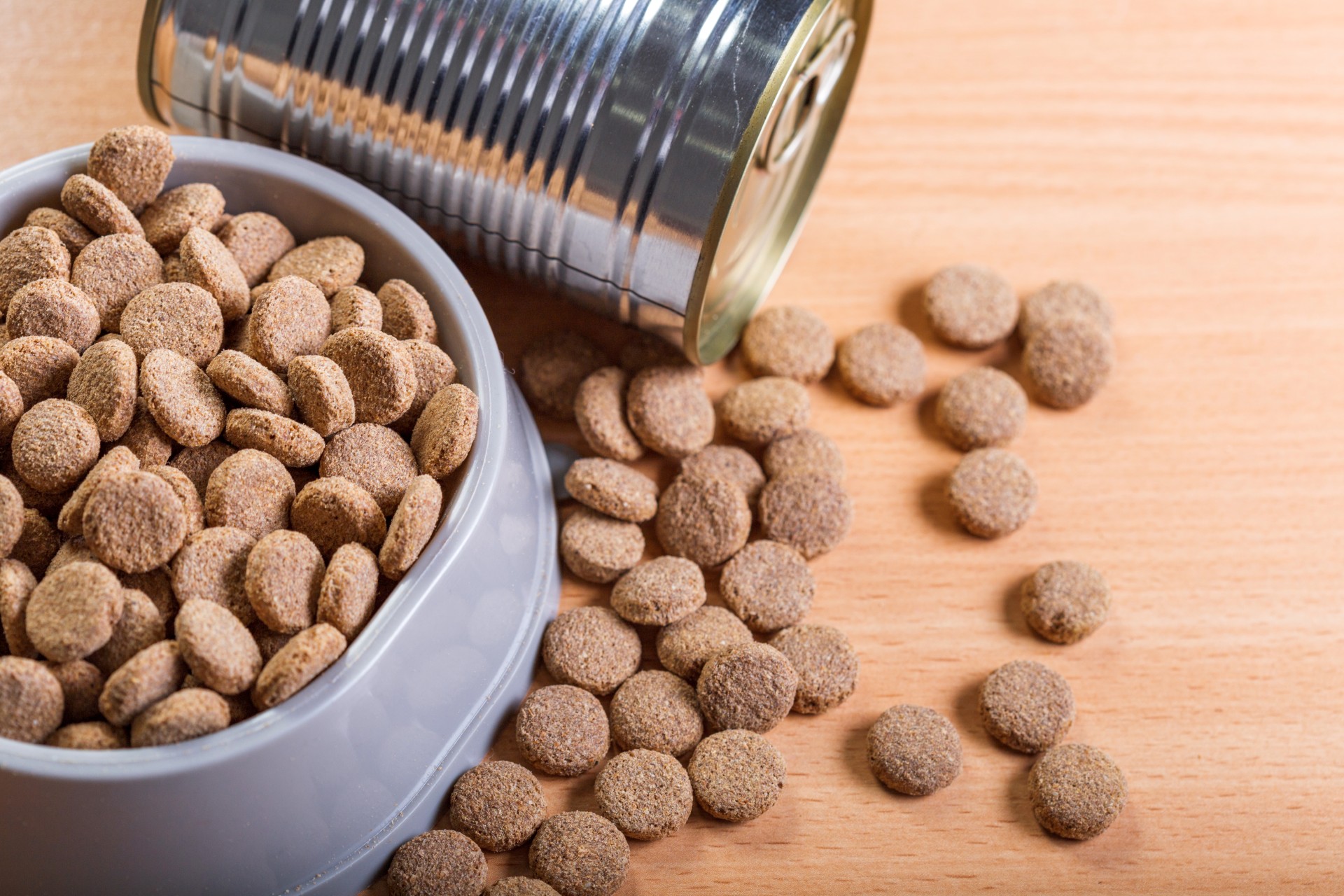Why Pet Parents Should Care About AGEs In Pet Food
As pet owners, we all want to give our dogs and cats the best possible care to help them live long, healthy lives. One crucial aspect of this is understanding how our pets’ food choices impact their health at a cellular level. This brings us to the topic of Advanced Glycation End Products, or AGEs. You might be familiar with AGEs in the context of human health, where they are known to contribute to aging and various chronic diseases. But did you know that our furry companions, who often consume more AGEs than we do, are also affected by these molecules[1]? While research on AGEs in pets isn’t as extensive as it is for humans, it’s essential to consider their potential impact on our pets’ health and well-being.
Understanding AGEs and Their Impact on Health
Advanced glycation end products are molecules formed when sugars react with proteins and fats in the body, a process called glycation. Glycation occurs naturally as part of the aging process. However, certain lifestyle factors, such as a diet high in sugars and processed foods, can speed up the formation of AGEs.
In humans, AGEs can accumulate in tissues throughout the body, including the skin, arteries, kidneys, and brain. This buildup can lead to chronic inflammation, oxidative stress, and damage to cells and tissues. These effects are linked to various age-related diseases, including diabetes, cardiovascular disease, Alzheimer’s disease, and certain cancers[2]. While we don’t have the same level of research connecting AGEs to specific diseases in dogs and cats, the mechanisms of damage caused by AGEs are likely similar across species[3].
The Role of Ultra-Processed Foods
In the context of human diets, ultra-processed foods—such as sugary snacks, fast food, and ready-to-eat meals—are major contributors to AGE formation[4]. These foods are often high in sugars, unhealthy fats, and artificial ingredients. Similarly, in the pet food industry, kibble and canned foods are often highly heat-processed, and that can lead to higher AGE levels in your pets’ bodies[5].
Lesser Processed Pet Food Options
Choosing less processed food options for your pets can significantly reduce their AGE intake. Fresh, minimally processed diets, such as raw or gently cooked foods, are closer to their natural diet and are typically lower in AGEs. These diets are akin to humans opting for whole, fresh foods like fruits, vegetables, lean meats, and whole grains over processed snacks and fast food.
Importantly, even adding a small amount of fresh foods to more processed diets can have a healthful impact on your pet. This can mean fresh fruits and veggies, lean meats, or additions of raw or gently cooked options.
The Role of AGEs in the Aging Process
AGEs contribute to aging by causing structural and functional changes in proteins, leading to a loss of elasticity and flexibility in tissues and organs. This can manifest in various ways, such as stiffening of blood vessels, reduced kidney function, and skin aging. In pets, these changes can affect their mobility, organ function, and overall quality of life as they age.
Reducing AGE Formation for Better Health
Reducing the formation of AGEs in the body can help mitigate their harmful effects. Here are some practical strategies:
- Limit Sugar Intake: A diet low in sugar and refined carbohydrates can reduce the production of AGEs. Opt for the addition of minimally processed foods for your pets whenever possible.
- Antioxidant-Rich Diet: Antioxidants can help neutralize the damaging effects of AGEs. Include foods rich in antioxidants in your pet’s diet, such as fresh fruits and vegetables if appropriate for their species and diet.
- Regular Exercise: Physical activity helps reduce AGE accumulation by improving overall metabolic health and reducing oxidative stress[6].
Conclusion
While we still have much to learn about the specific effects of AGEs on our pets, it’s clear that their diet and lifestyle play a significant role in their health and longevity. By making informed choices about their nutrition and promoting a healthy lifestyle, we can help minimize the impact of AGEs and support our pets in living long, vibrant lives.
*This article is for informational purposes only. It is not meant to provide medical advice or replace the advice of a qualified veterinarian.
References
- van Rooijen, C., Bosch, G., van der Poel, A.F.B., Wierenga, P.A., Alexander, L., & Hendriks, W.H. (2014). Quantitation of Maillard Reaction Products in Commercially Available Pet Foods. Journal of Agricultural and Food Chemistry, 62(35), 8883-8891. doi: 10.1021/jf502064h.
- Dehghan, M., Mente, A., Rangarajan, S., Mohan, V., Swaminathan, S., Avezum, A., et al. (2023). Ultra-processed foods and mortality: Analysis from the Prospective Urban and Rural Epidemiology study. American Journal of Clinical Nutrition, 117(1), 55-63. doi: 10.1016/j.ajcnut.2022.10.014.
- Palaseweenun, P., Hagen-Plantinga, E.A., Schonewille, J.T., Koop, G., Butre, C., & Jonathan, M., et al. (2021). Urinary excretion of advanced glycation end products in dogs and cats. Journal of Animal Physiology and Animal Nutrition (Berl), 105(1), 149-156. doi: 10.1111/jpn.13347.
- Poulsen, M.W., Hedegaard, R.V., Andersen, J.M., de Courten, B., Bügel, S., & Nielsen, J., et al. (2013). Advanced glycation endproducts in food and their effects on health. Food and Chemical Toxicology, 60, 10-37. doi: 10.1016/j.fct.2013.06.052.
- van Rooijen, C. (2015). Maillard reaction products in pet foods [Doctoral dissertation, Wageningen University, Wageningen, NL].
- Hooshiar, S.H., Esmaili, H., Taherian, A., & Jafarnejad, S. (2022). Exercise, Advanced Glycation End Products, and Their Effects on Cardiovascular Disorders: A Narrative Review. Heart and Mind, 6(3), 139-150. doi: 10.4103/hm.hm_31_22.






